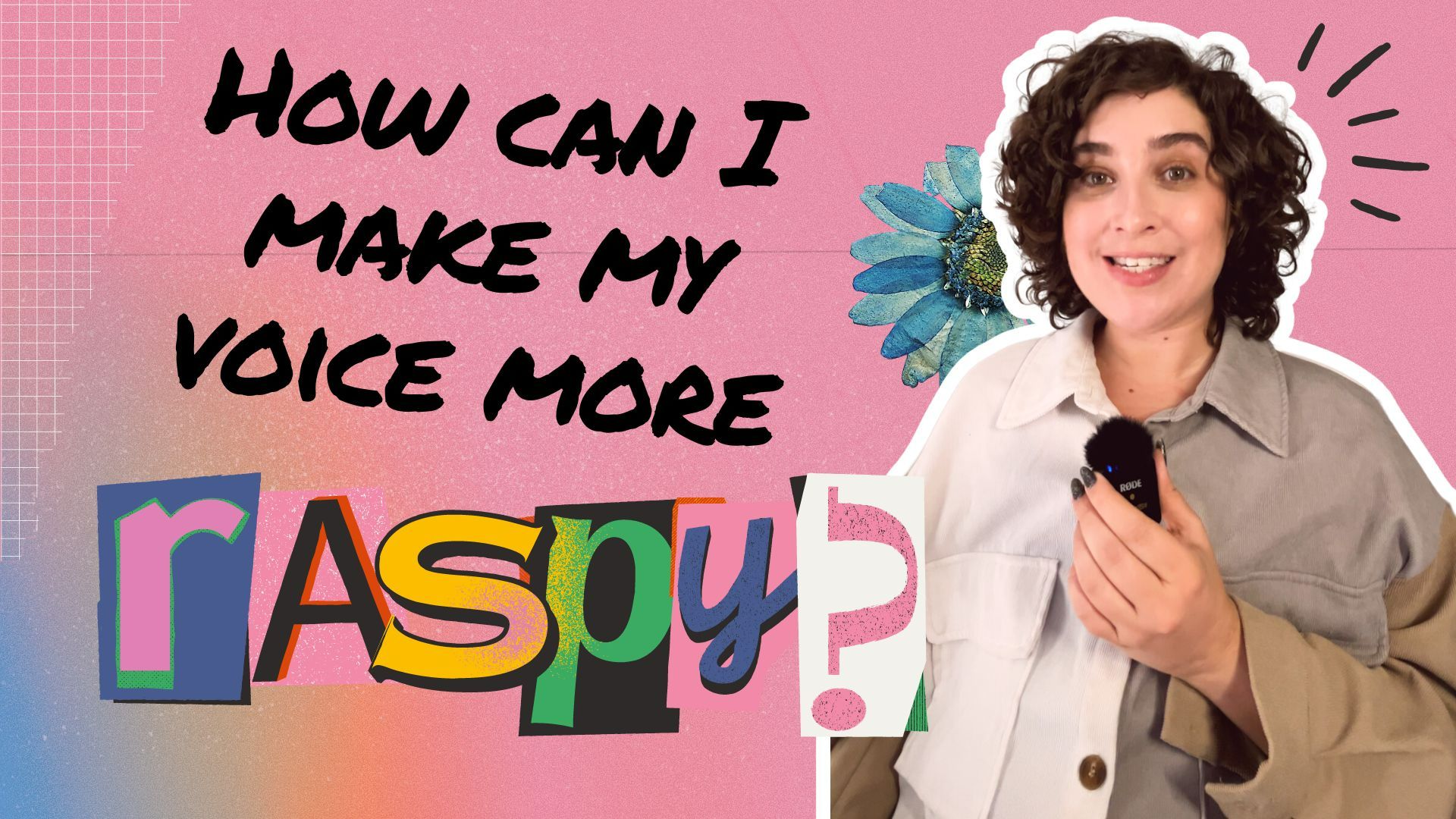Can We Talk Raspyness?
Apr 12, 2024
So there I was, streaming live on TikTok, engaging with an enthusiastic crowd of students and voice aficionados, when I received a particularly intriguing question that sparked quite a discussion: "How can I make my voice more raspy?"
It's not every day that someone wants to add a bit of gravel to their vocal timbre, but hey, I'm all about helping you explore your voice! So, let's break down what we covered and maybe clear the air about a few misconceptions along the way.
The Quest for a Raspy Voice
Raspy voices have this undeniable allure, often associated with a certain depth and a touch of mystery. However, achieving that raspiness can be a double-edged sword, as it often involves some less-than-ideal vocal habits or health implications.
First and foremost, it's essential to note that a naturally raspy voice can sometimes indicate underlying issues, like excess mucus on the vocal folds or incomplete vocal fold closure—commonly referred to as vocal fry. Diving into these territories of voice modulation can be fascinating, but it's crucial to approach them with caution to avoid any long-term damage.
Adding Raspyness Healthily
If you're set on experimenting with adding some rasp to your voice, I've got a couple of tricks up my sleeve that might just do the trick without sending you to the voice doc.
1. Vocal Fry
This technique is your go-to for a touch of rasp. Though often occurring at the lower ranges of your voice, you can indeed manipulate vocal fry to work across different pitches. It's about controlling the fry so it doesn't control you. Imagine the growl-like sound you make at the back of your throat at lower pitches—now think about bringing that into a higher register. It's the same principle, just tweaked a bit in execution.
2. Mastering the Fry
Getting vocal fry right involves full closure of your vocal folds, followed by letting a tiny bit of air bubble through. Think of the action your throat makes when you're about to cough—that's the kind of closure we're talking about. From there, you gently push through a bit of air. It’s a delicate balance—too much, and you're just breathing heavily; too little, and nothing happens.
3. Practice Makes Perfect
Integrating vocal fry into your regular speaking voice takes practice. Start by mastering the fry on its own. Once you can turn it on and off at will, begin to incorporate it into your speech or singing at different pitches.
A Word of Caution
While it's great to play around with your voice and discover new sounds and textures, always prioritize health. Speaking in a raspy voice all the time isn't generally recommended, as it can strain and potentially damage your voice over time.
Let's Keep Talking!
Remember, voice exploration should be fun and done with care. If you're curious about other ways to enhance or alter your voice, or if you have specific voice training questions, catch me every Monday afternoon on TikTok Live. I’m there to dive deep into your questions and help you safely and effectively achieve your voice goals.
There you have it, Bentley and everyone else curious about adding that sultry, raspy edge to your vocal palette. It's a bit of a journey, so don't be discouraged if it takes a little time to get it just right. Happy experimenting, and as always, keep those questions coming!
Want weekly tips, resources, and insights on trans voice training? Sign up for my newsletter and get the latest content delivered straight to your inbox. It's free!









